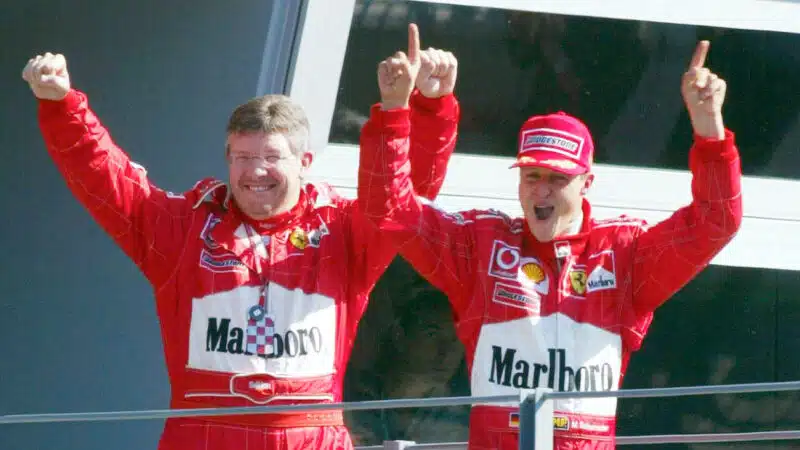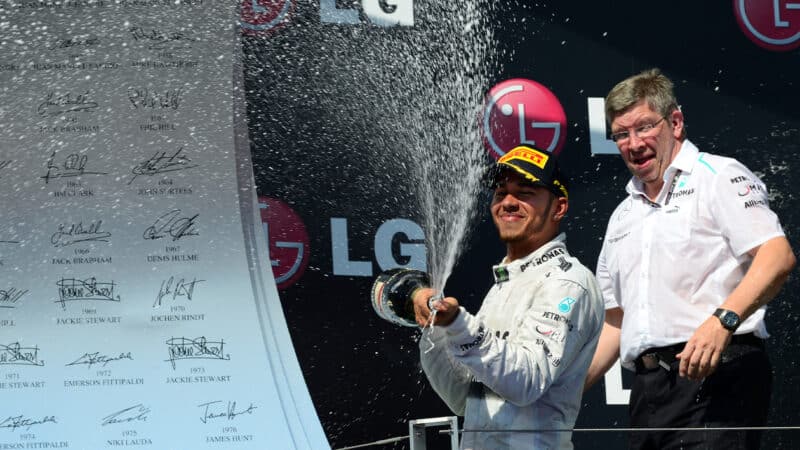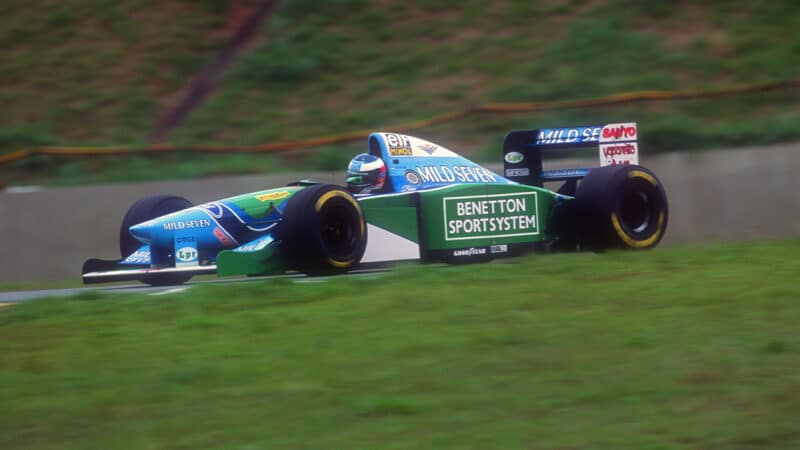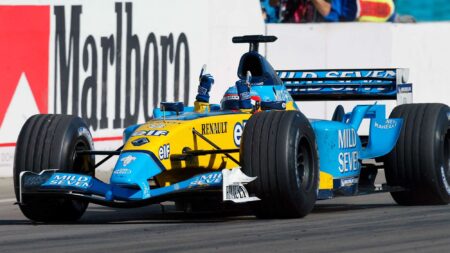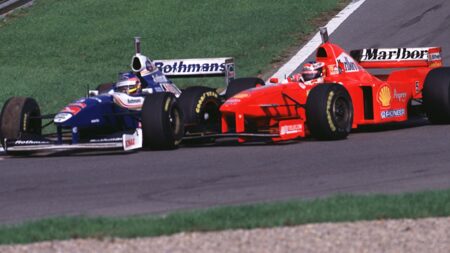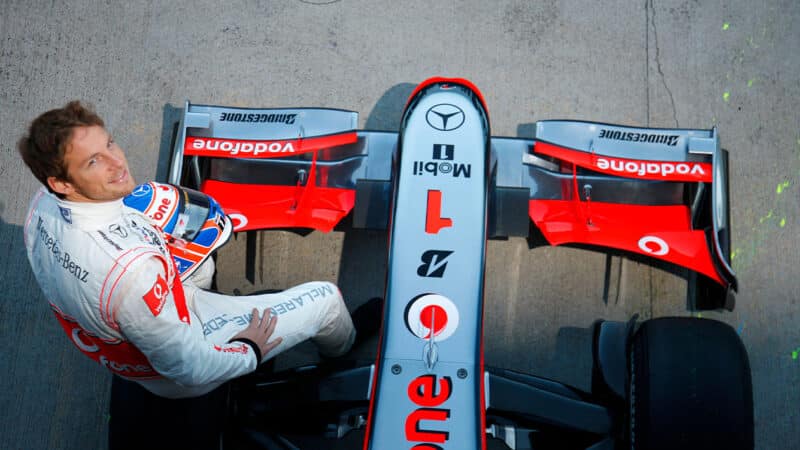As we journalists flew out of Budapest that Sunday evening, almost all we could talk about was the possibility that, finally, perhaps Ferrari and Schumacher were going to be beaten. Williams led the F1 constructors’ world championship, on 129 points, ahead of Ferrari on 121 and McLaren on 115. The F1 drivers’ world championship was closer still: Schumacher still led, on 72 points, but Juan Pablo Montoya (Williams) was second on 71 and Kimi Räikkönen (McLaren) third on 70. Alonso (Renault) was not that far behind either, on 54.
Why had Williams, McLaren, and Renault recently become so ascendant over Ferrari? The answer was tyres, for the Michelins run by the three grandee UK-based teams had been gradually developed to the point where they were generally now superior to the Bridgestones run by Ferrari, especially in warm, dry weather; and across almost all of Europe, 2003 was a warm, dry summer. The next F1 grand prix after Budapest would be Monza, where the weather forecast promised yet more sunshine and where the pressure for Ferrari folk is always intense. They simply could not risk facing another humiliation, not in front of the sometimes capricious tifosi, nor indeed at the hands of the often pugnacious Italian press.
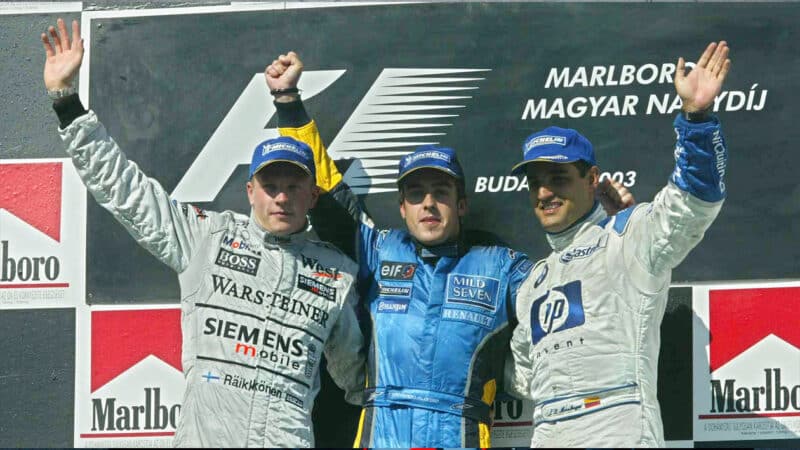
A maiden GP win for Alonso in Hungary. Podium finishes for Montoya and Räikkönen closed the 2003 championship gap to an uncompetitive Schumacher
Martin Rose/Bongarts/Getty Images
What happened next cannot in truth be filed under the heading ‘F1’s finest hour’. Todt and Brawn invited to Ferrari’s Maranello headquarters the two most senior FIA men at the time, president Max Mosley and race director Charlie Whiting, to meet not only themselves but also, perhaps surprisingly, Schumacher. We may never know what they discussed — precisely — but the result of their confab was that the FIA swiftly issued a rule reinterpretation concerning the way that tyres would thenceforth be measured for width, and that rule reinterpretation had the effect of rendering Michelin’s front tyres suddenly non-compliant (i.e. too wide) despite the fact that they had been ruled to be fully compliant ever since their introduction at the 2001 San Marino Grand Prix.
The specifics, if you are interested, are as follows. From Monza 2003 onwards the FIA decreed that F1 tyres would now be measured after and not before each race, as they had been previously, and that race-worn front tyre treads should not exceed a maximum width of 270mm. Considering that the Michelin front tyres’ treads were 269mm wide when new, and that the unholy violence done to tyres during a grand prix might well push them past that limit, Michelin’s engineers were consequently forced to design a new front tyre in virtually no time at all, thereby potentially sacrificing a competitive edge that had previously been regarded as legitimate. Bridgestone would suffer no such problems since its front tyre treads measured only 255mm in width.
Ever the mischief maker, Mosley decided that the team principals’ official FIA press conference at Monza would feature Brawn and his three most strident critics: Patrick Head (Williams), Ron Dennis (McLaren), and Flavio Briatore (Renault). On the day, the Monza press conference room was absolutely jam-packed – there was standing room only by the time the media questioning began – but I had a seat and indeed I had arrived early so as to bag a position near the front.
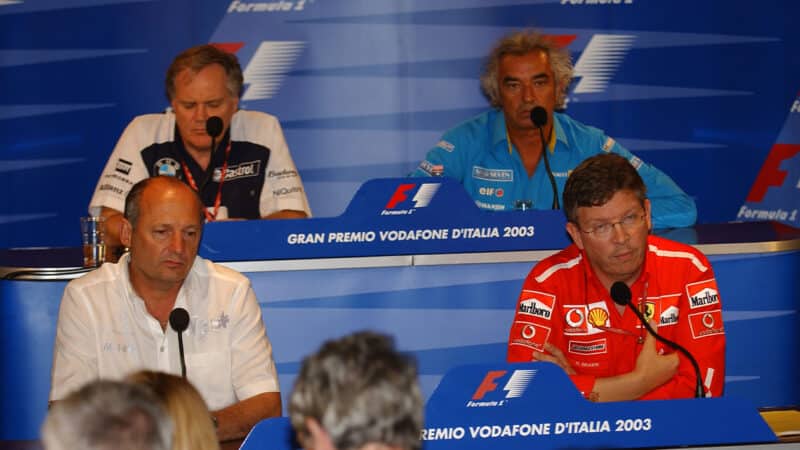
The image alone tells the story of a tense 2003 Monza press conference
DPPI
As a palpably nervous Brawn launched into a carefully prepared defence of the FIA’s new rule reinterpretation, Head, who was sitting behind him, leant forward, already visibly angry, and interrupted. “Why,” he thundered, “did you wait 38 races [the period in which Williams had been running the ‘offending’ Michelin front tyre] before raising this point, if you had had this view all the time?”
“That tyre, as I understand it, Patrick, you introduced at Monaco this year,” Brawn replied.
“It’s exactly the same mould,” Head boomed. Then he added, for clarity, “It comes out of exactly the same mould that first appeared at Imola in 2001.”
Now Brawn was cross, too. “Renault use different tyres to you, Patrick,” he said icily. “There’s a range of Michelins being used in F1. We weren’t aware of the problem before Hungary [where Renault had won], so any suggestion that we’d timed it is inaccurate. The consequence was the letter [from Whiting to all teams and both tyre companies] which came out on the Wednesday after Hungary.”
“I thought the consequence was a meeting at Maranello on the Tuesday after Hungary between you and the president and race director of the FIA,” Head replied, scowling.
“Patrick, Bridgestone had what they felt was a limit on where they were prepared to go with the width of their front tyres from their interpretation of the regulation,” said Brawn – which remark brought an enraged Dennis into the argument.
